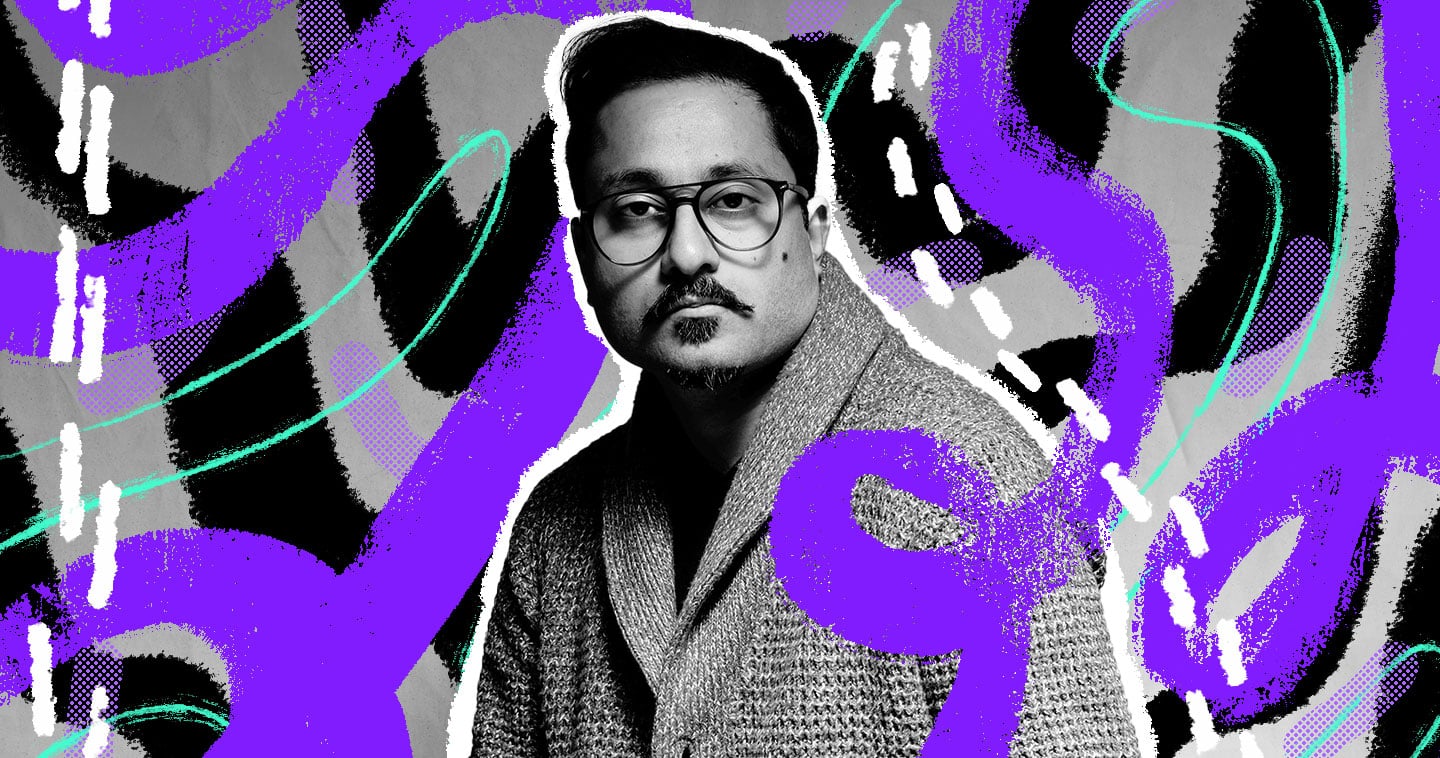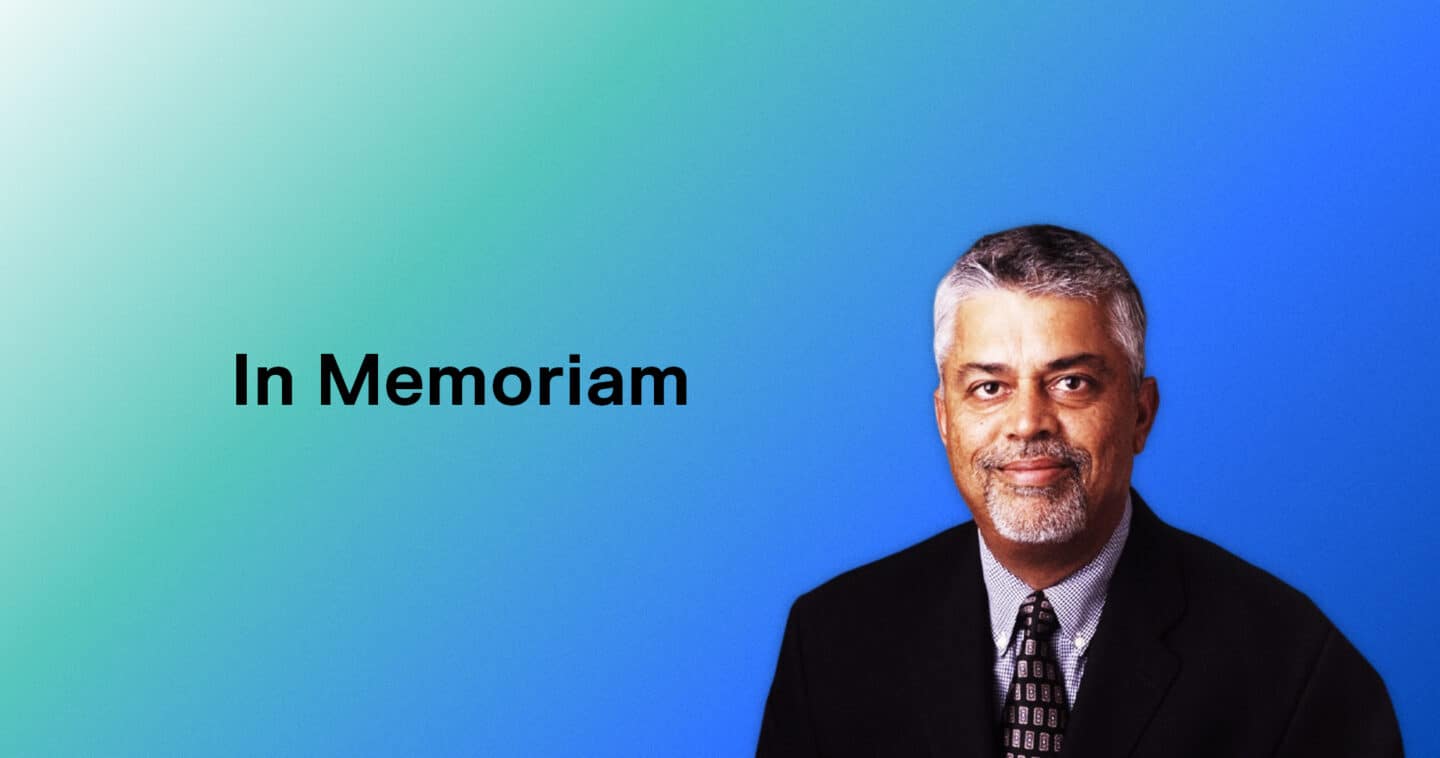What’s Your Create: Trevor Godinho
The best photographs remove the barriers between viewer and subject. Composition, aperture, shutter speed, lighting, film stock, editing software—it all melts away, leaving nothing behind but a compelling work of art. Trevor Godinho understands that better than most.
“My sessions are 98% talking, and maybe I take a couple of photos. I’m technically sound, yes, but it’s not really about the photographs,” Godinho said. “It’s about breaking down that wall of vulnerability.”
Godinho is an internationally acclaimed artist and published photographer, but he isn’t interested in talking shop about gear or bragging about how expensive his kit is. As he sees it, all that tech is there to serve his real focus: connecting with people and amplifying their stories.
Getting behind the camera
Scanning the shelves behind Godinho quickly reveals his broad artistic process. Sculptures, bottles of scotch, books, and little trinkets are happily tucked in nooks from floor to ceiling. Godinho could have pursued any artistic medium, as he was trained to do at university, but he took a shine to photography.
“I started shooting to capture references for scenes I eventually wanted to paint, but once I picked up the camera and started shooting, I couldn’t stop,” Godinho said.
“When I started shooting, it was a natural transition. You’re looking and trying to capture emotion, a moment that people can empathize with.”
Godinho worked relentlessly at his new craft, spending weeks on end developing film in the darkroom. Inspired by the Italian Renaissance painter Caravaggio and a love of cinema, he felt a pull toward portraiture, its storytelling, and how it can capture a moment in time. Light, shadow play, gravitas, expression, and the grotesque became his tools as he evoked empathy through his work. Godinho’s artistic practice and interests led him to fashion photography almost instantly, but he was met with discrimination early on.
“I wanted to shoot fashion from the get-go but was told because of my Indian descent that I should just stick to Bollywood. In hindsight, that ended up being the perfect motivator,” he recalled.
Godinho’s drive and passion for photography start to surface as he details his early years. He peers out from glasses and a well-kempt beard, leaning forward now, as he describes his early challenges and success. From his first major publications in Maxim, Elle Canada, and Men’s Health Australia to taking portraits of Michael Douglas, Margot Robbie, and other international superstars, Godinho’s success was driven by his singular style and his philosophy on working with subjects.
“I look at photography like a dance,” he said. “It’s a constant give and take. You and the subject go back and forth until eventually things like composition and lighting melt away. You start moving in sync to the point that you’re not even thinking anymore.”
Through the viewfinder
It’s easy to fall in sync with Godinho. The interview grows into that natural rhythm he strives for while shooting, and the conversation ebbs and flows. Yet, surprisingly, Godinho finds this scenario more challenging than capturing the famous actors and athletes he’s worked with.
“I find working with celebrities easier because they have muscle memory, their whole lives are in the public eye. I may only have them for one minute, but we’re both there to do a job and work together,” he explained.
“You have to be able to capture them, their soul, in a way that isn’t cliché, that is true to you and them. Everyone gets the same person, the same outfit, the same background. It’s up to you to capture something special.”
Working with everyday people, Godinho feels, can be trickier because of that lack of familiarity with the camera, the flash of the lights, and the voyeuristic view through the viewfinder.
“They’re more guarded. They’re afraid to show things. They’re afraid to be vulnerable. You have to spend time getting to know someone, make them comfortable, and get them to open up. When they open up, it’s like a flood and you get exactly what you want,” he said.
Fade into the background
Whether he’s working with celebrities or veterans, shooting film or digital, Godinho needs the equipment to fade into the background. He’ll prepare for sessions weeks in advance, tinkering with lights, camera position, lenses, and the exposure triangle. But, when it comes to the day of, everything needs to simply work.
“I look at cameras as hammers. No matter what brand you get, it will still drive a nail. That’s its job. It’s about knowing how to use equipment so it doesn’t fail you,” Godinho said.
That reliability is a requirement for a creative professional like Godinho. Whether he’s flying from Toronto to Milan for a once-in-a-lifetime shoot, or taking expensive gear on location at the beach, he relies on his equipment, even in the worst-case scenario.
“I was shooting on a beach in Miami, and this huge wave came and took me and the model out. I had a three second panic attack about the camera as I fished it out of the ocean, but it still worked and we kept shooting. Knowing I can rely on my equipment so I can focus on my job is the bare minimum, whether it’s a camera or an SD card,” he said.
These exacting standards apply to Godinho’s digital technology, too. Since day one, Godinho’s had a Western Digital HDD on his desk, and he slides in a SanDisk SD card every time he goes to shoot.
“I’ve been using Western Digital hard drives and SD cards since the beginning, and I’ve had no issues. That’s the sign of a good company, that I can rely on these products,” Godinho said.”
“Some companies rely on firmware updates, but when a brand cares to do the legwork on their product, it makes a difference.”
Zooming out
As the conversation nears its conclusion, Godinho seems to turn his attention to the future. Over the years, Godinho’s reached a sense of peace about his craft and process. He’s no longer interested in the newest gear, which he sees as a distraction from the work of connecting with people.
“I still work on my Nikon S2 from the ‘50s. My RZ67 medium format camera is from the ‘80s. For me, it’s not about the equipment, it’s about the equipment doing what I need it to do. I think I’ve grown out of chasing equipment. It’s about honing my craft and understanding people better,” he said.
Shooting analog is another way Godinho stays in touch with his artistic practice.
“It’s about more than speed or fidelity. It’s about process. It’s about mood and atmosphere. Shooting film allows me to slow down and be present, to be engrossed with every single aspect of creation,” he said.
The mindset of simplification and creation are quintessential to Godinho’s photography. For him, making art is a process of adding to what came before and leaving your impression of humanity on it.
“Addition—my job as a human is to add to the world. It’s not about subtraction, as a human I’m adding my perspective, I’m adding art, I’m adding joy and sorrow. I’m hoping to add to the archive of human life.”




